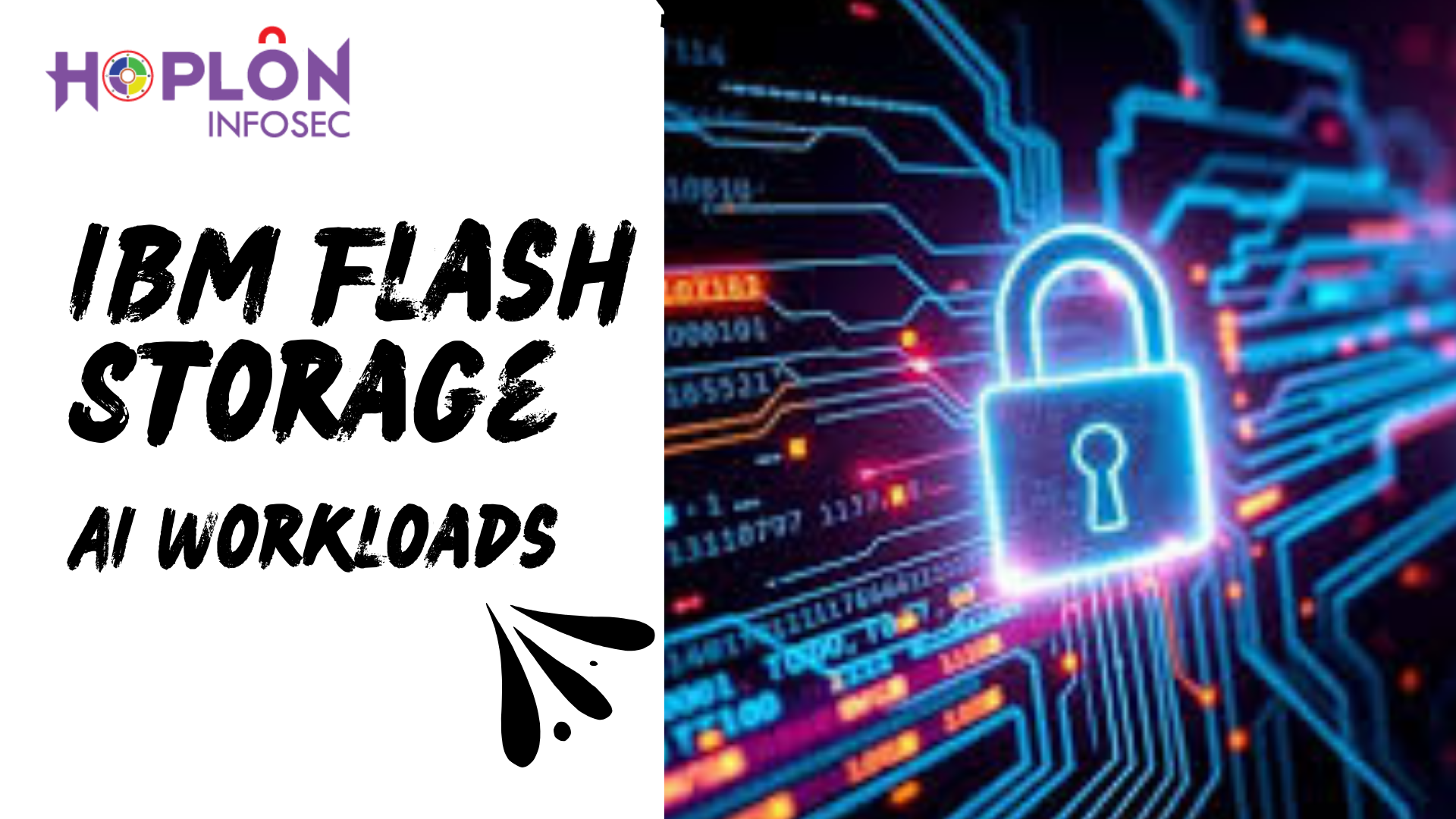AI workloads require high performance and predictability as well as access to sensitive information. By 2025, the rate of speed at which AI models learn, adapt, and respond is dependent directly on the underlying storage infrastructure.
IBM FlashSystem takes center stage there. What makes the difference to the data needs of AI and analytics is flash storage that offers the top-notch speed of NVMe with smart storage management and unprecedented resiliency.
When it comes to cutting training duration, supporting real-time edge inference, or anything in between, the scalability that businesses need to support their AI endeavors with backing is found through IBM Flash storage.
AI reaches its bottleneck: a data problem
Large AI models can require training in the order of terabytes, or even petabytes, of data. The inability to access this data as quickly as possible slows down the processing and wastes innovation.
The performance of AI becomes poor when:
- Traditional hard disk drives or SATA solid-state disks are not able to transfer data quickly enough
- A large number of GPU nodes have to share with the GPU nodes I/O bandwidth
- There is no flexibility or resilience in storage architecture
Stat: IDC predicts that more than three-quarters of the time, AI deployments do not perform as designed, DLT (insufficient storage is recognized as a leading factor).
It is not only the high-performance GPU in AI. It all lies in the data flow. And IBM FlashSystem eliminates the bottlenecks. What Makes IBM FlashSystem Different?
Key Capabilities:
IBM FlashSystem is specific to high-performance AI workloads with speed, resilience, and intelligent automation.
- End-to-end NVMe for ultra-low latency and high throughput
- Accelerated storage processing in FlashCore Modules (FCMs)
- A storage management capability that is AI-enhanced to maximize performance and cost
- Cyber resilience capabilities to secure prized information and restore it quickly
- Hybrid and multicloud readiness to serve AI anywhere it hands
Outcome: When businesses deploy IBM FlashSystem, they are reporting up to:
- Training of models is 30% faster
- Storage-related latency is 40% reduced
- Intelligent compression and tiering that reduce TCO
IBM Flash in Action: Real-World Use Cases and Expanded Benefits
Since AI applications are spreading wider across industries, storage infrastructure must go faster and smarter. Knowing that raw performance is not the only aspect that drives busy operations, IBM FlashSystem also allows efficient operations, regulatory compliance, and real-time responsiveness.
The in-built AI of IBM assists in anticipating its future storage abnormalities, usage patterns, and optimizing them. It is not only an IT gain: it generates practical outcomes for the business side.
Case Study: An international logistics company enhanced the quality of delivery forecasting models and reduced the compute time that was used by 40 percent when they migrated to IBM FlashSystem.
Fact: IBM FlashSystem has been tested in an ESG Lab validation, which demonstrated a 6x performance increase during throughput when running concurrent AI workloads in a hybrid cloud environment.
Now, how does this translate to industry-wise:
Healthcare – Imaging and Diagnostics
- Facilitates the retrieval of medical data and the diagnostic training of models
- Improve patient turnaround time, because inferencing will occur at the edge and is faster
Financial Services – Real-Time Fraud Detection
- Reduce the time of model responses to fraud scoring
- Enables secure, compliant access to critical transaction logs
Manufacturing – Predictive Maintenance
- Powers real-time data analysis from sensors and IoT devices
- Reduces unplanned downtime through smarter insights
Media – Video Processing and AI Editing
- Accelerates rendering and automation systems
- Work in real-time tagging and analysis of content
Such use cases demonstrate that IBM FlashSystem supports the outcome of AI, not only the infrastructure metrics.
NVMe at the Core of IBM Flash
NVMe (Non-Volatile Memory Express) allows accessing data faster by taking advantage of the PCIe bus, which removes the constraints of legacy protocols.
IBM FlashSystem takes NVMe even further:
- Supports NVMe end-to-end across controllers, shelves, and fabrics
- Uses multi-tenant architectures to enable parallelism across AI workloads
- Produces microsecond latency to operate in archival AI pipelines
Training a model in the cloud or making real-time predictions at the edge, NVMe in IBM FlashSystem keeps the data pipeline powering your performance.
More Than Speed: IBM’s Resilience Advantage for AI Workloads
Now, resilience is equally as important as speed. Failure might be caused by downtime during AI training or inference, resulting in loss of data or violation of compliance. IBM FlashSystem is built to allow high availability, in-line protection, which keeps the AI pipelines reliable.
More than securing essential information, the IBM FlashSystem helps resume business after rollback to a pre-breach condition with confidence.
Other business advantages:
- Supports immutable snapshots to protect AI data lakes
- Dynamic tiering in order to minimize cost without the constriction of performance
- AI-driven self-healing features that pre-emptively mitigate errors
With AI processes, time offline equals no productivity and unreliable information. IBM FlashSystem is developed to offer cyber resilience to maintain continuity.
Resilience Capabilities:
- Back up and conjecture through Safeguarded Copy
- Storage-layer detection and alerting of ransomware
- High availability clustering and replication across sites
These features make IBM FlashSystem more than just fast; it’s reliable, secure, and ready for AI at scale.
Architecting for Tomorrow: Scaling AI with IBM FlashSystem
AI isn’t static. Models mature, information proliferates, and expectations change. What comes next is ready with IBM FlashSystem. Its smooth interaction with orchestration tools makes it possible for the teams to scale, provision, and deploy storage assets on demand.
IBM Storage Insights gives admins a single dashboard of performance, utilization, and predictive alerts to ensure scale and steady-as-you-go performance.
Support for AI ecosystem tools:
- PowerAI, PyTorch, TensorFlow, and IBM Watsonx
- Full container orchestration support with CSI drivers
- DevOps pipeline API and MLOps workflow API The product is well known in the DevOps market, but newly available as an API to enable DevOps pipeline API integrations.
Modern AI deployments run in hybrid, containerized environments. IBM FlashSystem integrates with:
- Red Hat OpenShift for container-native AI apps
- VMware and Kubernetes clusters
- IBM Cloud and AWS for hybrid flexibility
Using NVMe-over-Fabrics, organizations can scale high-performance flash across numerous nodes and are well-suited to distributed training and inference of AI models.
Final Thoughts
Reshaping the way businesses are done, AI can, however, only do that, given that the infrastructure can support it. IBM FlashSystem provides the performance, capacity, and protection required to enable AI, at the edge or in the data center.
When it comes to putting up AI solutions in 2025, the storage infrastructure you have can be an essential help; it can also be a strategic advantage.



